 |
|  |
 |
 |
|
Common Sense
Saddle Fitting
|
Saddle fitting information provided by

AMERICA’S LEADING SADDLE BRAND
|
| |
|
| Determining saddle fit is important to the comfort and safety of horse and rider. There are many things that affect the fit of the saddle. Here we outline the major points and how to avoid the common mistakes of saddle fitting. |
| |
|
Fit for the Horse
The goal in saddle fitting is to have the greatest amount of contact between the bar of the tree and the horse. Keep in mind there is no standardization in the industry for tree sizing-measurements differ between tree makers, saddle makers, and saddle styles. |
| |
|
Withers
-
The average, defined wither will usually fit a Medium/Regular tree. This horse will have a more refined body with definition in the withers - the modern version of Quarter Horses, Tennessee Walking Horses, Thoroughbreds, etc.
-
A more rounded, mutton wither with a flatter back will usually fit a Wide tree. This horse has a blocky build, heavier neck, often referred to as the “foundation” type.
-
Draft horses and Draft horse crosses with a very wide, flat back and wither, will usually require a Draft or Extra Wide tree.
-
Large muscles behind the scapula can interfere with saddle fit. A wider tree may be needed. Flex trees also work well with this conformation.
Topline
-
Higher haunches, or the horse built “downhill”, can allow the saddle to put more pressure on the withers and may require a pad that is built up in the wither area.
-
A swayback causes “bridging” of the saddle. The bars only make contact in the front and rear of the saddle, putting excess pressure or rubbing the withers and loins. It can be seen in older horses, and poorly conditioned horses, and is a common saddle fitting problem. It can often times be remedied with the use of a bridge pad.
-
A horse with a short back will require a saddle with short bars/ skirts.
-
A very straight back, often seen in mules but not very prevalent in horses, can cause the saddle to “rock”. Rocking is a condition where the tree puts more pressure on the center of the horses back, and less at the ends of the bars. A tree with a “mule bar” or a pad with shims may be recommended.
Condition & Age
-
Consider the body condition of the horse you are fitting. A significant amount of weight gain or loss can alter the way the saddle fits.
-
Also consider the age and maturity of the horse. A saddle you buy for your two-year old today may not fit as well when he fills out in another year or two. As a mature horse progresses into its senior years, changes in conformation can alter the fit of your existing saddle.
|
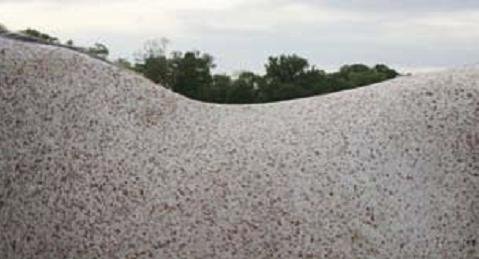
Horse with defined wither usually fits a
medium, regular, or semi-Quarter horse tree.
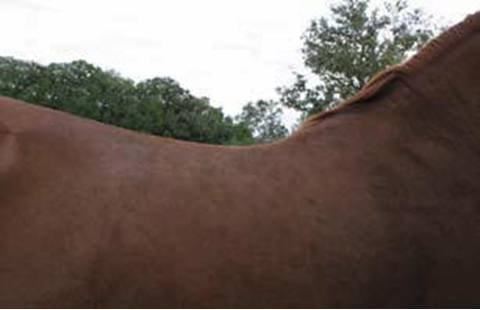
Foundation type horse with rounded withers that typically needs a Wide or Full Quarter horse tree.
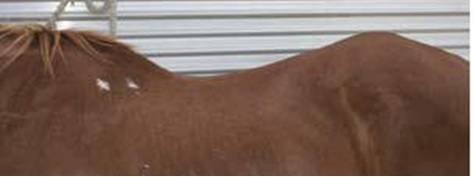
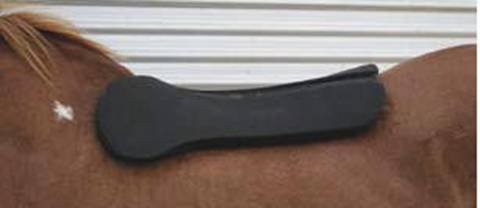
This 20-year-old gelding has a significant sway back and prominent withers. Remedied with a
shoulder bridge pad. Note the white spots from
past ill-fitting saddle.
|
| |
|
| Fit for the Rider |
| |
|
|
Discipline
- How will the saddle be used? Do you plan to rope, trail ride, barrel race, etc.? For example, a roping saddle needs to be built strong enough to withstand tremendous torque, but if you are trail riding, lightweight comfort will be more important.
-
Specialized saddles are available for certain types of horses. For example, gaited saddles allow more bar flare for the horse’s shoulder action; mule saddles typically have a straighter bar for the mule back.
|
Sizing for the Rider
-
Rider preference for saddle size varies-some like a larger seat, some a smaller seat, and discipline plays a role. In general, you should have about 4” between the front of your body and the swell of the saddle, or be able to fit two fingers between your thigh and the swell. Your backside should rest at the base of the cantle, but not be pressing against the back of the cantle.
-
A slightly larger seat is better than too small. When sitting in the saddle your thighs should not touch the back of the swell. This can be uncomfortable for the rider.
-
If you have long legs you may need a larger seat size so your knees (long thighs) don’t hang off the front of the fenders.
-
When buying a saddle always adjust the stirrups to the proper length so you can assess the feel of the seat and the balance of the saddle correctly.
|
| |
|
|
Evaluate the Saddle on the Horse
With the saddle positioned correctly-the bars of the tree behind the shoulder blades of the horse-evaluate the following points:
|
| |
|
|
Gullet Clearance
-
Place the saddle on the horse’s bare back (no pad). There should be two to three fingers space between the top of the wither and the gullet of the saddle.
-
If you can fit your whole hand (vertically) between the bottom of the gullet and the wither, the tree is probably too narrow.
-
If there is room for only one finger, or the bottom of the gullet is touching the top of the wither, the tree is probably too wide.
|
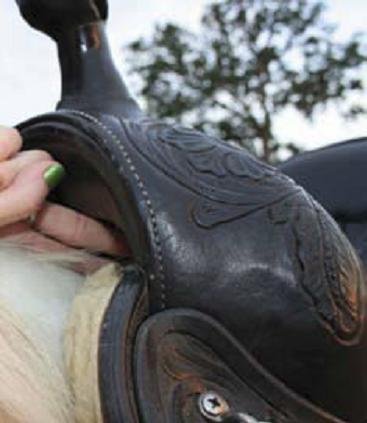
Good gullet clearance |
| |
|
|
Levelness of Saddle
- Step back and look at the saddle on the horse’s back. The saddle should be level. If the saddle is not level, you can try adjusting it by using shims, sliding it forward or back to raise or lower the front, or trying different rigging positions. When all else fails, you may need a different saddle with a better fit.
- If the front of the saddle is high the tree may be too narrow.
- If the front of the saddle is low, the tree may be too wide.
|
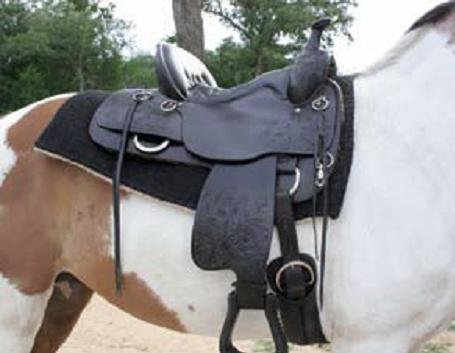
Great saddle fit-the saddle is level and there
is adequate gullet clearance.
|
|
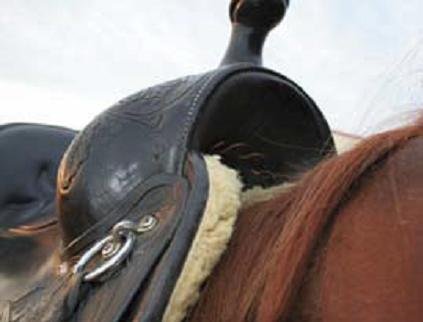
Saddle is too narrow and perched up on
this horse’s withers. Pinching would occur.
|
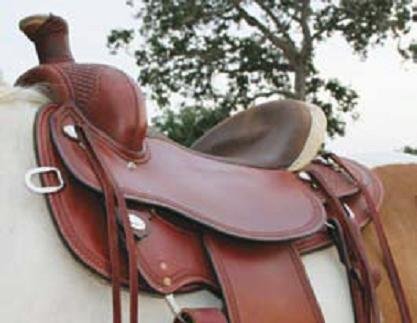
Saddle is too wide with gullet resting on
horse’s withers and tilted downward.
|
| |
|
| |
|
| |
|
|
Continue to Next Page>> |
| |
|
|
 |
|
|
|
 |